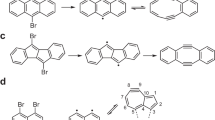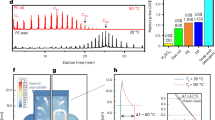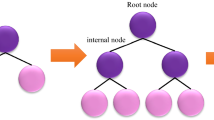Abstract
IN the fractionation of hydrocarbons found in Copaiba balsam, we have isolated, from a bluish fraction, at a boiling point of 13O°–136° C, under 0.2 mm. pressure, a compound with the typical reactions of azulenes, and which we propose to call ‘carioazulene’. In an attempt to establish if its formation results from dehydrogenation of caryophillene, we submitted the remaining isolated fractions, consisting of caryophillene, to a dehydrogenation process using, respectively, selenium, sulphur and palladium under pressure, in an autoclave.
This is a preview of subscription content, access via your institution
Access options
Subscribe to this journal
Receive 51 print issues and online access
$199.00 per year
only $3.90 per issue
Buy this article
- Purchase on SpringerLink
- Instant access to full article PDF
Prices may be subject to local taxes which are calculated during checkout
Similar content being viewed by others
Author information
Authors and Affiliations
Rights and permissions
About this article
Cite this article
GONSALVES, N., CAVALCANTI, M. & PAIVA, D. Carioazulene, Natural and Synthetic, derived from Caryophillene. Nature 177, 145–146 (1956). https://doi.org/10.1038/177145a0
Issue date:
DOI: https://doi.org/10.1038/177145a0



